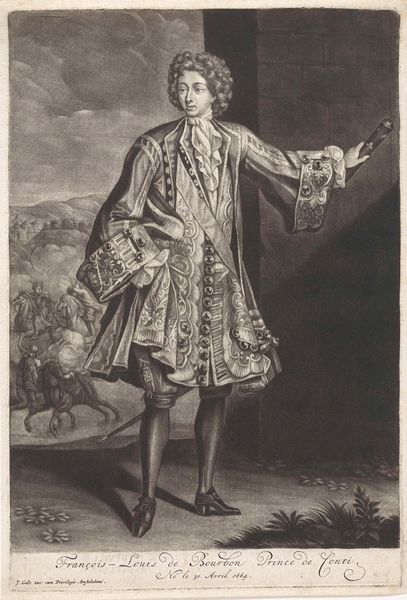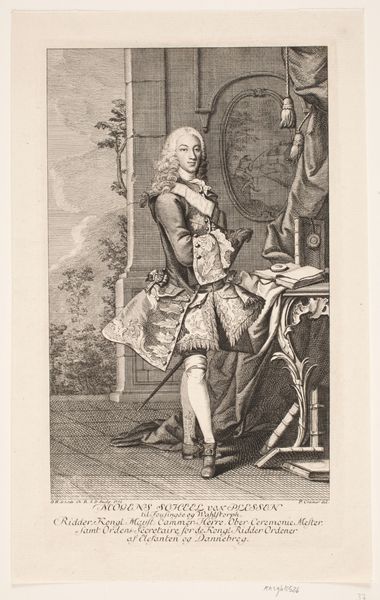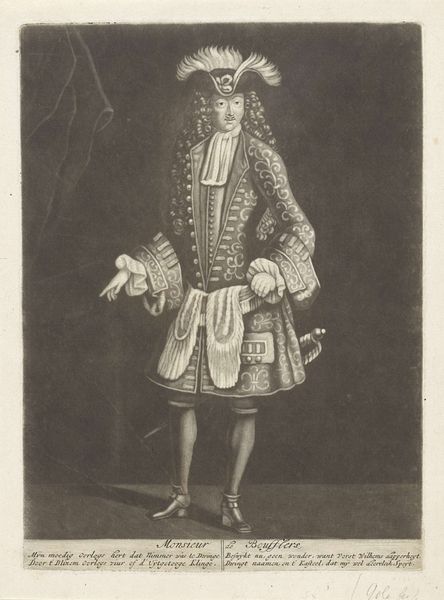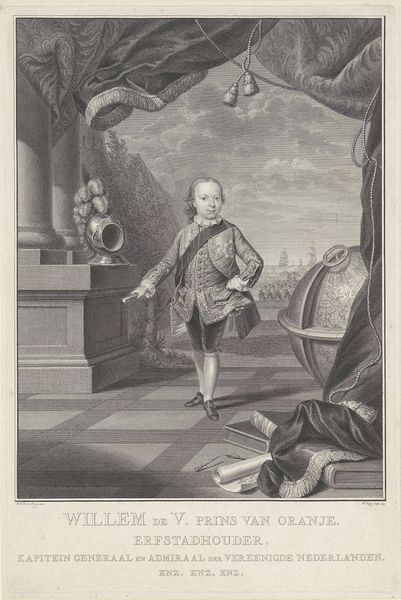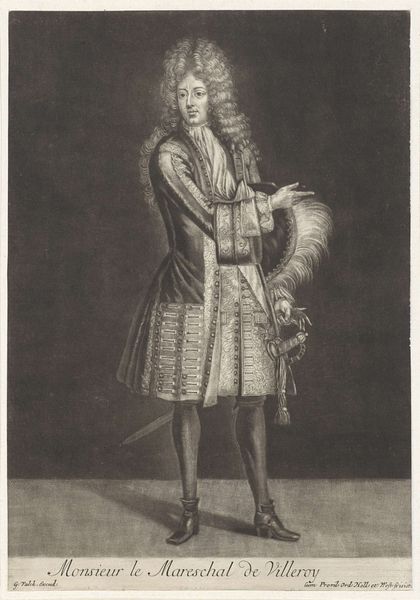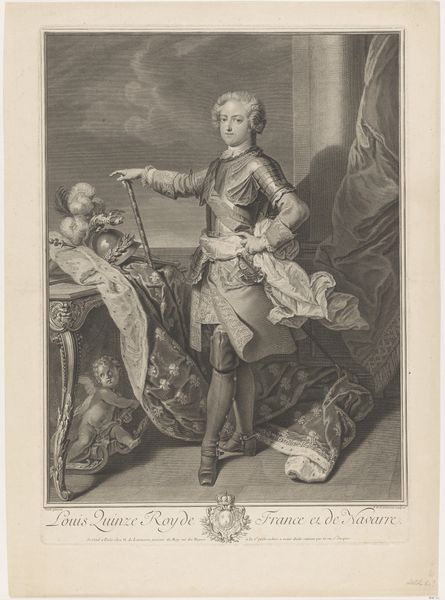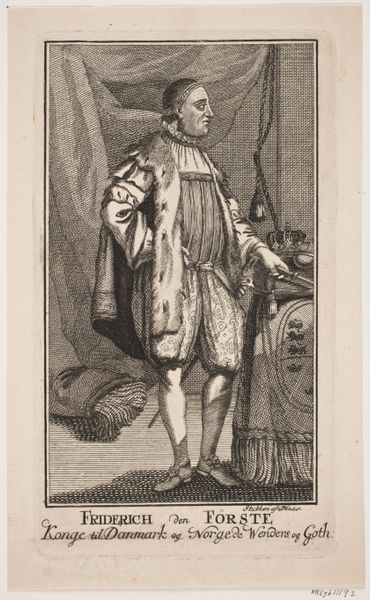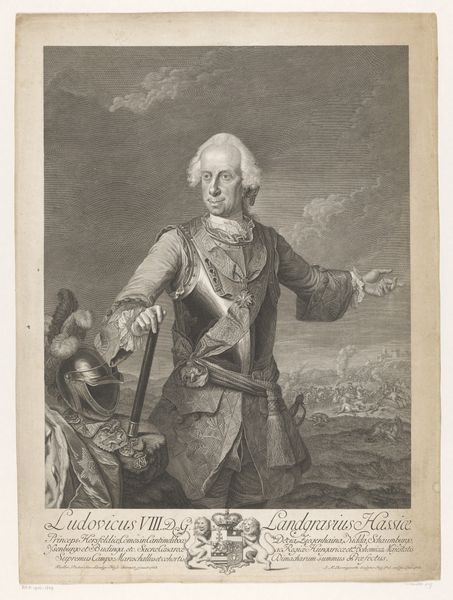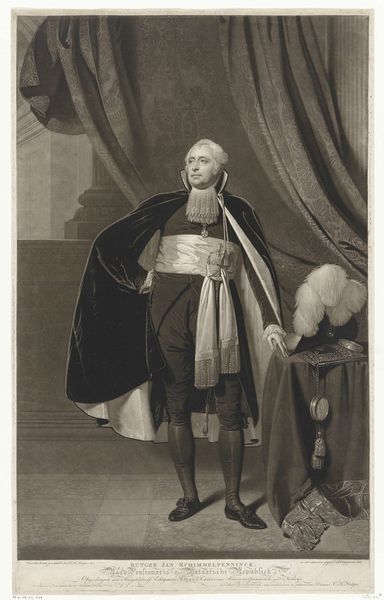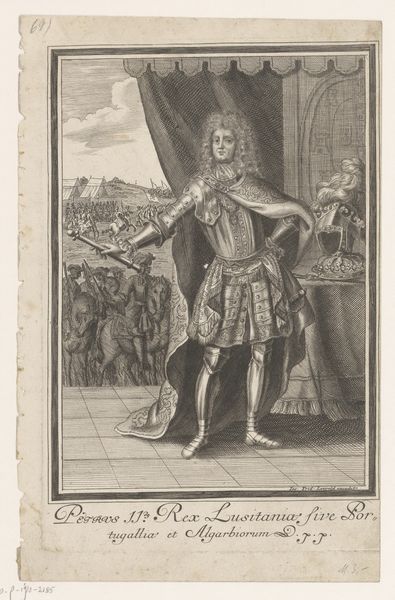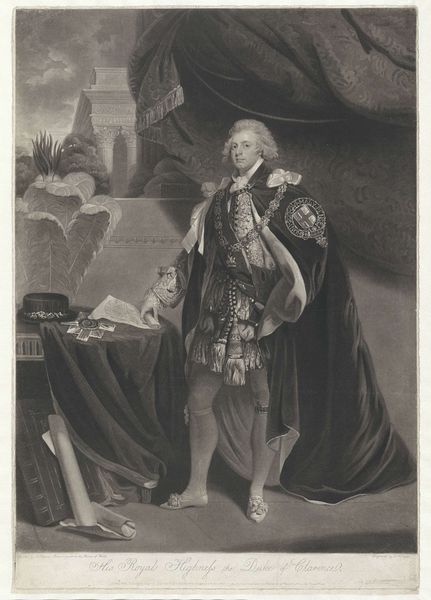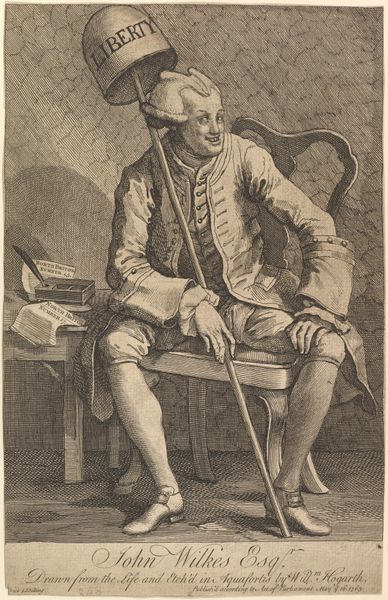
Dimensions: height 509 mm, width 312 mm
Copyright: Rijks Museum: Open Domain
Editor: So, this is "Jan Punt als Achilles," an engraving from 1770 by Jan Punt, housed at the Rijksmuseum. The detailing in the clothing and drapery is incredible, but it all feels very posed, very staged. What do you see in this piece? Curator: The appeal for me resides precisely in that theatricality. Consider the engraving itself – a reproductive medium, essentially a mechanism for circulating images and, importantly, ideas. Who was consuming this image? Why Achilles? Editor: I guess it speaks to a specific type of patronage. Was this kind of engraving common then? Curator: Exactly. We must remember the labor involved: the engraver’s skill, the printing process, the distribution networks. These prints weren't luxury items only for aristocrats; they democratized access to imagery and narratives, like Achilles, creating a form of cultural capital accessible to a wider, literate, middle class. Editor: So the act of creating and disseminating the image becomes part of the meaning itself? It's not just about the subject matter, but also about who had access to it. Curator: Precisely! The reproduction transforms the original concept. We must also consider what kind of statement Jan Punt might be doing about heroic performance and status by portraying himself as Achilles. Editor: It's fascinating to consider the layers of meaning embedded in the production and distribution of the artwork, rather than just its surface aesthetics. Curator: Absolutely. Thinking about materials and processes pushes us beyond idealised interpretations. We consider the artwork’s real place in society, who could make it, sell it, own it and, ultimately, who consumed it. Editor: I hadn’t considered the impact of distribution that way before; it's really broadened my understanding of art in this era.
Comments
No comments
Be the first to comment and join the conversation on the ultimate creative platform.

